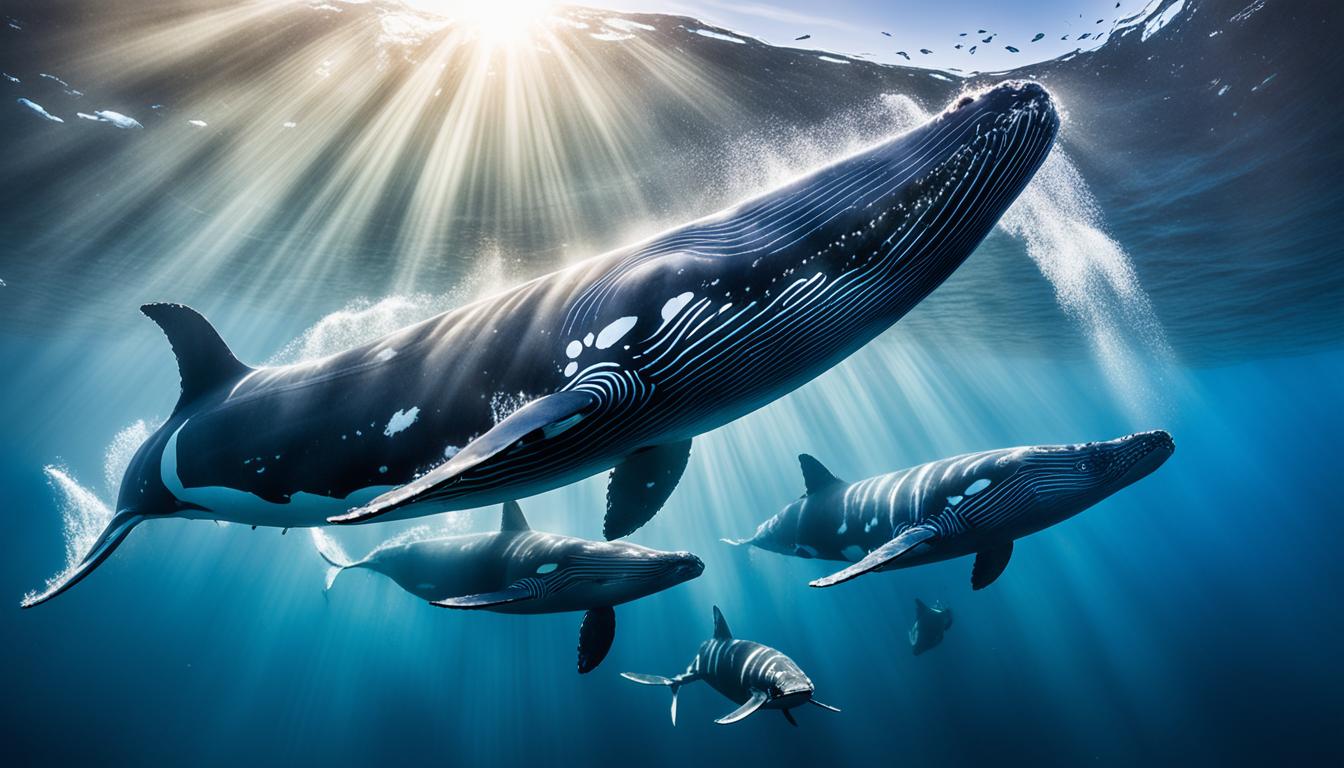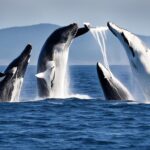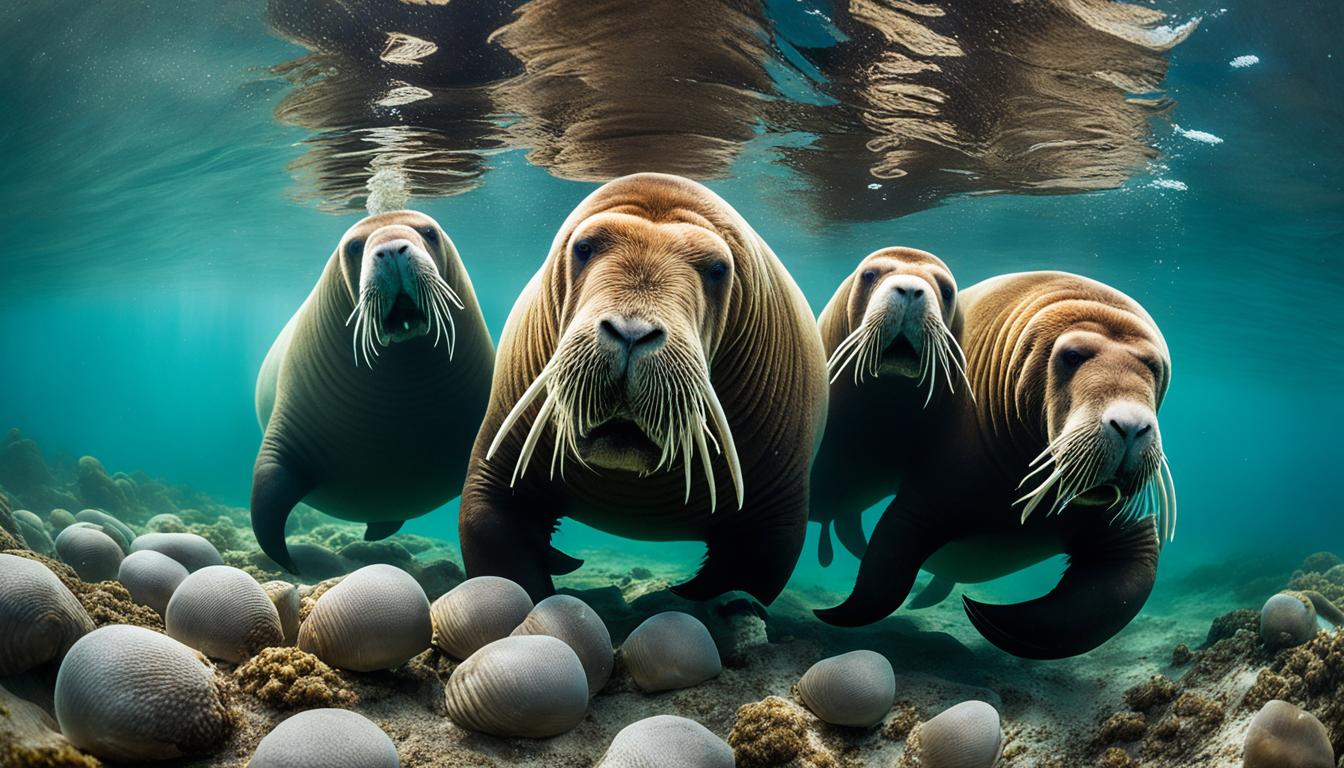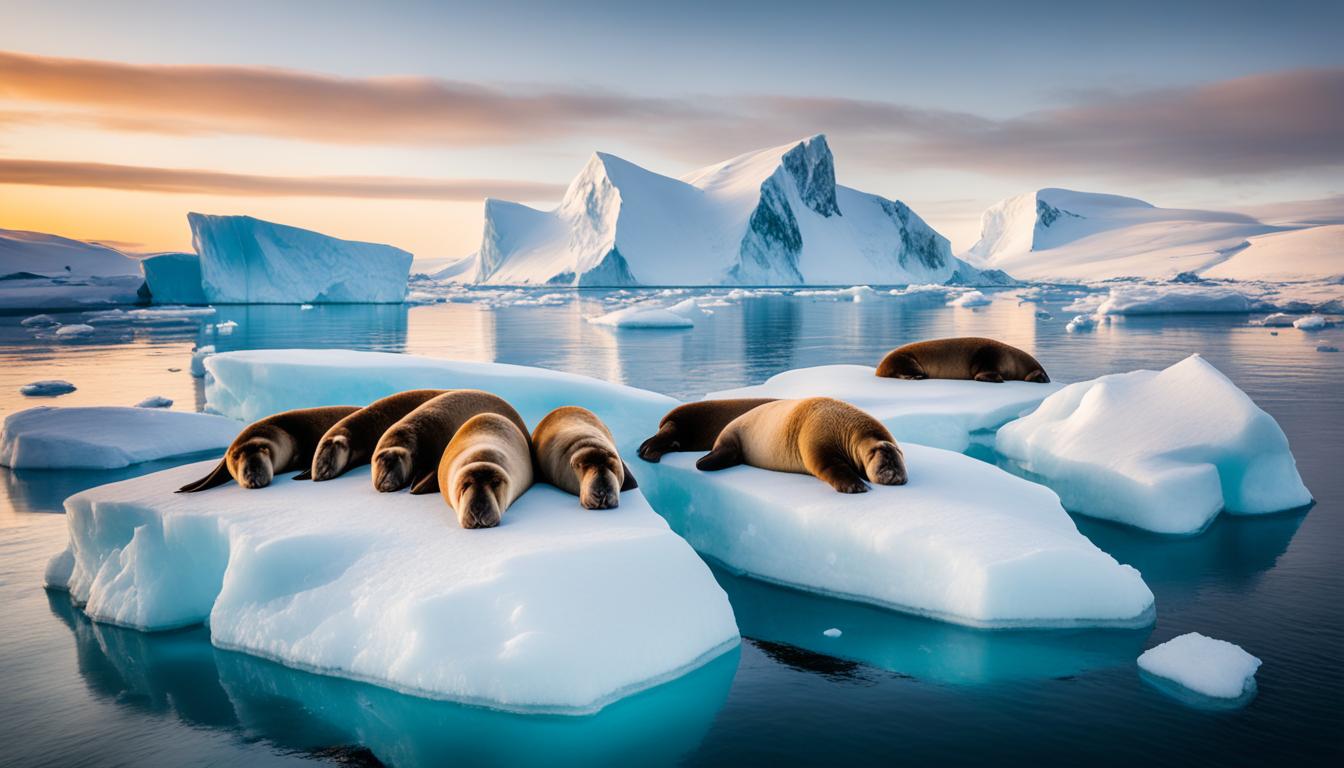Whales are the biggest animals on Earth, and their diets are quite interesting. You might ask, what do whales eat? Their eating habits change a lot, based on their size and where they live. This piece will look into the different types of whales—baleen and toothed—and how they eat. We’ll see how their diets help us understand their lives and their importance in keeping the oceans healthy.
Understanding Whale Dietary Habits
Whales have different diets based on their species, showing how they adapt to various food sources. Baleen whales, like blue and humpback whales, use baleen plates to filter food from the water. They can eat a lot, with a blue whale eating up to 16 tons of krill daily during certain times.
Toothed whales, such as sperm whales and orcas, hunt differently. They use echolocation to find and catch fish, squid, and even other whales. This hunting affects their diet and migration patterns. Knowing how whales eat helps us understand their role in the ocean and how to protect them.
| Type of Whale | Feeding Mechanism | Common Whale Food Sources |
|---|---|---|
| Baleen Whales | Filter Feeding | Krill, Plankton, Small Fish |
| Toothed Whales | Active Hunting | Fish, Squid, Other Marine Mammals |
Baleen vs. Toothed Whales: Feeding Mechanisms and Diet
Baleen whales and toothed whales have different ways of eating because of their unique evolution. Baleen whales use baleen plates to filter-feed on small ocean creatures. They can eat a lot of krill and plankton, with some eating several tons a day during certain times.
Toothed whales, on the other hand, hunt actively with their teeth. They catch fish and squid to eat. This way, they can change their diet based on what’s available. For example, orcas, a type of toothed whale, might eat marine mammals when they need to.
These different ways of eating show how important each group is in the ocean. Learning about their eating habits helps us understand the ocean better.
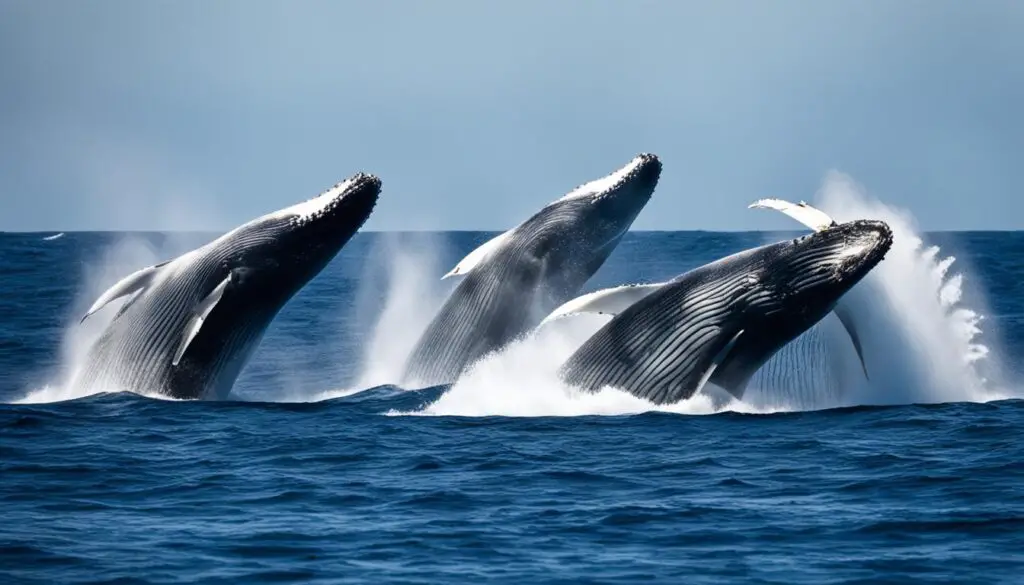
What Do Whales Eat? Exploring Their Varied Diets
Whales have different diets, showing how adaptable these sea mammals are. Knowing what they eat helps us understand their roles in nature. Their diets fall into two main groups: baleen whales and toothed whales. Each group has unique ways of eating based on where they live and what they find to eat.
Diet of Baleen Whales
Baleen whales eat small ocean creatures like krill and plankton. They use baleen plates to filter these tiny animals from the water. For example, the blue whale eats about four tons of krill every day. This helps keep the ocean’s balance.
- Blue Whales: Primarily feed on krill.
- Gray Whales: Utilize bottom-feeding strategies to consume benthic crustaceans.
- Humpback Whales: Employ bubble net feeding techniques to capture schools of fish.
Diet of Toothed Whales
Toothed whales eat a variety of larger sea animals. Sperm whales hunt squid deep in the ocean. Orcas are versatile, hunting fish, seals, and even other whales. Their diets change based on what’s available and where they live.
- Sperm Whales: Focus on squid, hunting at great depths.
- Orcas: Known to hunt seals, fish, and even larger whales.
- Beluga Whales: Feed on fish, crustaceans, and even marine worms.
Whales have different diets, showing their specialized ways of eating and their role in the ocean. By learning about the diets of baleen and toothed whales, we can better understand these amazing creatures and their place in nature.
The Feeding Behaviors of Gray Whales
Gray whales have unique ways of feeding that make them stand out. They are bottom feeders, which means they stir up the ocean floor to find food. This method helps them get the nutrients they need from the sea.
Their diet mainly includes small crustaceans like amphipods, which live in the ocean’s sediments. This feeding strategy shows how well they adapt to their environment. It lets them survive in places where other sea creatures might not make it.
Knowing how gray whales eat is key to understanding their survival. By watching how they interact with the ocean, we see how vital they are to their ecosystem’s health.
Whale Diets and Their Role in the Marine Ecosystem
Learning about whales’ diets helps us understand their role in the ocean. As top predators, their eating habits affect prey populations and ocean life. Their diets show how the ocean’s health affects all living things in it.
Whales help with nutrient cycling in the ocean through their diets. Their poop is full of nutrients that help phytoplankton grow. This is key for many ocean food chains. It also helps with carbon dioxide storage, which affects the climate.
Also, whales act as indicators of ocean health. They show us how well certain fish and the ecosystem are doing. By studying what whales eat, we learn how vital they are to the ocean’s balance.

